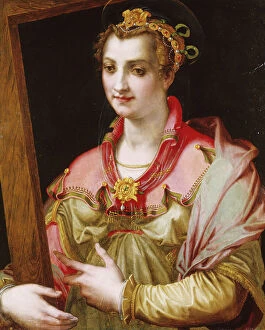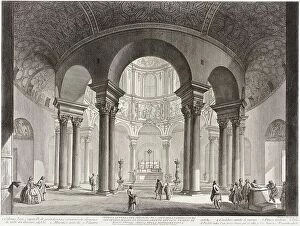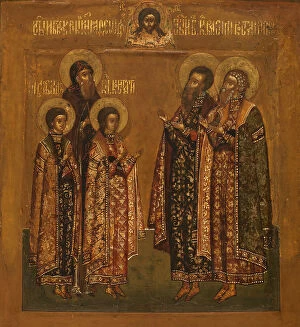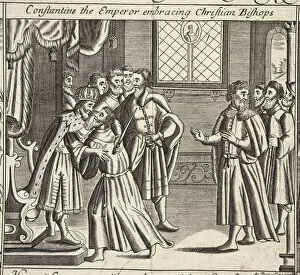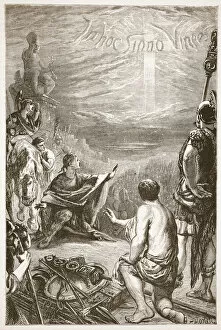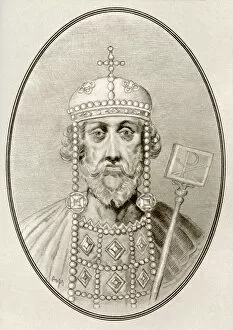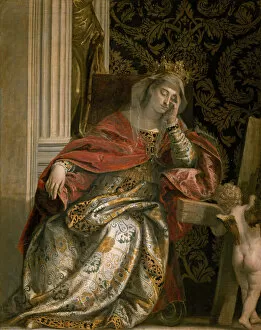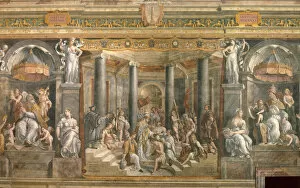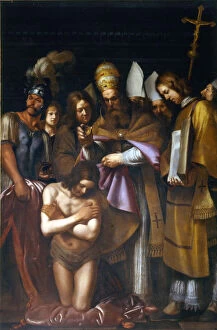Saint Constantine Collection
Saint Constantine, also known as Constantinus Magnus, was a Roman Emperor from 306 to 337 AD
For sale as Licensed Images
Choose your image, Select your licence and Download the media
Saint Constantine, also known as Constantinus Magnus, was a Roman Emperor from 306 to 337 AD. He played a significant role in the history of Christianity and is often referred to as Saint Constantine due to his embrace of the faith. This marble portrait head of Emperor Constantine I, dating back to c. 325-370 AD, showcases his regal features and commanding presence. Constantine's conversion to Christianity marked a turning point for the religion's acceptance within the Roman Empire. In this illustration from Imperatorum romanorum omnium orientalium et, we see him embracing Christian Bishops, symbolizing his support for the faith and its leaders. Visions of the cross at Saxa Rubra were pivotal moments in Constantine's life that led him towards Christianity. These visions are depicted in litho form, capturing their ethereal nature and spiritual significance. The Dream of Saint Helena portrays another important figure in Constantine's story – his mother Helena. She is credited with discovering the Holy Cross on which Jesus Christ was crucified. This manuscript Gradual from around 1420 beautifully illustrates this momentous event. Exaltation of the Cross showcases Saints Constantine the Great and Helena together, emphasizing their shared devotion to Christianity. Created around 1350 by an anonymous artist, this artwork highlights their influential roles in promoting and spreading the faith. The Baptism of Constantine holds immense symbolic value as it represents his formal initiation into Christianity. Gianfrancesco Penni's painting from 1517-1524 captures this sacred ceremony with intricate detail and vibrant colors. Another depiction of The Baptism of Constantine comes from Giovanni Antonio Galli during the first third of the 17th century. His rendition adds depth and emotion to this transformative moment in history. This portrayal by Gordon Ross shows us how artists throughout different periods have sought inspiration from Saint Constantine's legacy as they bring historical figures back to life.


